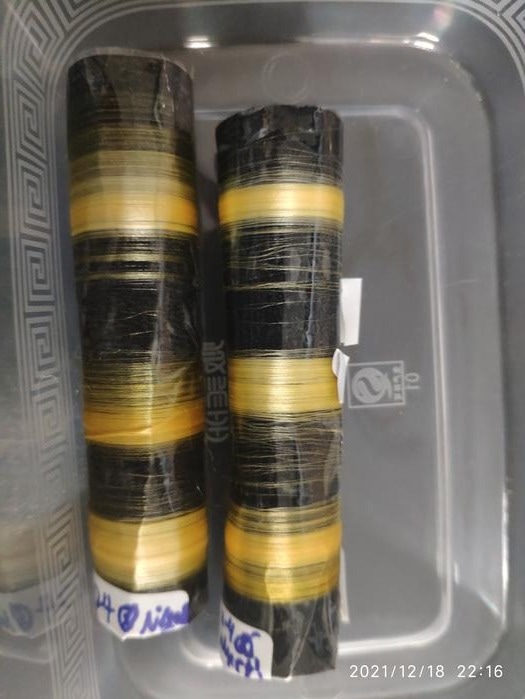Researchers in China have created fibers that are six times more durable than the Kevlar used in bulletproof vests by genetically modifying silkworms to produce spider silk. The study is the first to effectively synthesize full-length spider silk proteins using silkworms, and it was published on September 20th, 2023 in the journal Matter. The results show a method that could be applied to create a synthetic commercial fiber less harmful to the environment than nylon.
 Silk fibers produced by transgenic silkworms. Image Credit: Junpeng Mi
Silk fibers produced by transgenic silkworms. Image Credit: Junpeng Mi
Spider silk has caught the attention of scientists as a tantalizing eco-friendly substitute for synthetic fibers, which often originate from fossil fuels that cause greenhouse gas emissions and can discharge damaging microplastics into the environment. However, using nature as a substitute is not without obstacles.
Silkworm silk is presently the only animal silk fiber commercialized on a large scale, with well-established rearing techniques. Consequently, employing genetically modified silkworms to produce spider silk fiber enables low-cost, large-scale commercialization.
Junpeng Mi, Study First Author and Ph.D. Student, College of Biological Science and Medical Engineering, Donghua University
The surface layer of lipids and glycoproteins needed to give artificial spider silk the same anti-aging “skin layer” that spiders apply to their webs has been difficult to include in earlier procedures for spinning the material.
Mi claims that since silkworms also cover their own fibers with a protective covering, genetically altered silkworms can overcome this issue.
Mi added, “Spider silk stands as a strategic resource in urgent need of exploration. The exceptionally high mechanical performance of the fibers produced in this study holds significant promise in this field. This type of fiber can be utilized as surgical sutures, addressing a global demand exceeding 300 million procedures annually.”
According to Mi, spider silk fibers can be employed in smart materials, the military, aerospace technology, and biomedical engineering. They can also be employed to make more comfortable clothing and novel forms of protective vests.
Mi and his colleagues used a combination of CRISPR-Cas9 gene editing technology and hundreds of thousands of microinjections into fertilized silkworm eggs to transfer spider silk protein genes into the DNA of silkworms so that it would be produced in their glands and create spider silk from silkworms.
When Mi observed the silkworms’ eyes flashing red under the fluorescence microscope—an indication that the gene editing had been successful—he was ecstatic. However, the microinjections provided “one of the most significant challenges” in the study, according to Mi.
He further stated, “I danced and practically ran to Professor Meng Qing’s office to share this result. I remember that night vividly, as the excitement kept me awake.”
The transgenic spider silk proteins are required to undergo “localization” alterations for them to engage with proteins in the silkworm glands and ensure that the fiber is spun appropriately. The group created a “minimal basic structure model” of silkworm silk to direct the changes.
Mi noted, “This concept of ‘localization,’ introduced in this thesis, along with the proposed minimal structural model, represents a significant departure from previous research. We are confident that large-scale commercialization is on the horizon.”
Mi intends to leverage the present study’s findings on the toughness and strength of spider silk fibers to create genetically modified silkworms that manufacture spider silk fibers from both natural and synthetic amino acids in the future.
He concluded, “The introduction of over one hundred engineered amino acids holds boundless potential for engineered spider silk fibers.”
The National Natural Science Foundation of China, the Key Projects of the Science and Technology Commission of Shanghai Municipality, the International Cooperation Projects of the Science and Technology Commission of Shanghai Municipality, and the Fundamental Research Funds for the Central Universities provided funding for this study.
Journal Reference:
Mi, J., et al. (2023) High-strength and ultra-tough whole spider silk fibers spun from transgenic silkworms. Matter. doi:10.1016/j.matt.2023.08.013